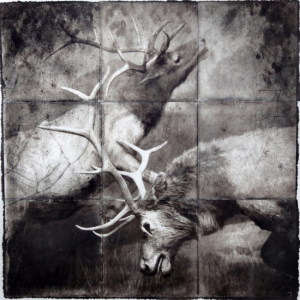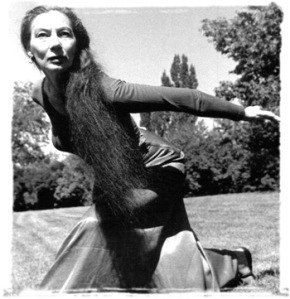Teresa Bruce's Blog, page 41
January 31, 2013
Beatnik Duncan, cat burglars and full moons

If you have a calendar, you have an invitation. Just circle the first Saturday night after the first full moon of every new year. This year the first Saturday was the first full moon so I thought it was a well-fated night to attend my first beatnik cat burglar party.
The beatnik cat burglar party may be the longest running poetic event in Beaufort County, at least according to David Adams, the underground, unofficial leader of this throwback group of hippies and appreciators of Beatnik poetry. The only rules are there has to be a bonfire, words must be spoken and black must be worn. At times during the history of the beatnik cat burglar party there have been rumors of all-nighters, scantily-clad women and full-throated R-rated poetry. I can’t attest to that, but I can tell you that nobody blinked an eyelash when I threw out the first P-bomb of the evening. (That’s the word “penis” used in the service of poetry) Actually, I should give Duncan Miller the credit. I was reading some passages from his unpublished novel, “The Air-Drawn Dagger.”
Duncan’s work was rejected by the New York publishing world, and I’m not sure he ever submitted to the good people at City Lights because he might not have considered his work counter-cultural or beatnik at all. But when a group of my sisters-by-Byrne gathered to read some of his books, we all got that impression. Duncan wrote six novels from 1933 to his death in 1992 and if he was as well-read as he was prolific he surely was influenced by the likes of Anaïs Nin, William S. Burroughs, Jack Kerouac or Allen Ginsberg.
So at the beatnik cat burglar party twenty years after Duncan Miller’s death, I took the liberty of excerpting four separate passages from the book he began writing when he lived in Santa Fe (yes, Byrne and Duncan were that cool, contemporaries of Georgia O’Keefe) Judging from the sounds of fingers snapping around a bonfire, Duncan might have had more success as a beat poet.
From Air-Drawn Dagger
Am I mad?
or are my nerve endings stretched wire thin
acting as antennae picking up the sounds stored in my cortical library
always ready to respond to the push button pressure
of my penis?
I am no longer an air-borne spore but
a parasitic growth that must suck on the vitals of others
to survive
I have only been half alive til now -
that I feel the winds blowing against parts of me never exposed or even suspected before.
with buffetings of fear that shake articulated bones against areas of heart
I never knew I had,
hurricanes of love roaring in caverns, the depths of which
I have never plumbed before.
I am at last
Naked to the world!
Perhaps it is strange that I do not remember her name
or see her face yet see the opal in her hands clearly.
But that may be the way of memory which, like a river rolling on to its mouth
picks up debris along the way.
Word. Duncan.
Noun
1.
 beatnik - a member of the beat generation; a nonconformist in dress and behavior
beatnik - a member of the beat generation; a nonconformist in dress and behaviorbeat
beat generation, beatniks, beats - a United States youth subculture of the 1950s; rejected possessions or regular work or traditional dress; for communal living and psychedelic drugs and anarchism; favored modern forms of jazz (e.g., bebop)
recusant, nonconformist - someone who refuses to conform to established standards of conduct


January 24, 2013
Flashbacks
I’ve been dealing with a lot of flashbacks this week. Not the kind cool people who came of age in the ‘60s have, but the kind that make you wish you had paid more attention to grammar in high school.
I know why screenwriting “gurus” like Robert McKee strongly advise against using flashbacks in screenplays. Unless you’re really good at it, flashback sequences are clumsy excuses for not setting up the backstory when you should have. As you type you can practically hear the little musical interlude notes familiar to viewers of bad soap operas in the ‘80s, the kind of music that accompany cheesy visual effects like fuzzy ripples across the screen.
But when you’re writing about a compelling woman whose life spanned from 1909 to 2001, flashbacks are unavoidable. Without them, my book about Byrne Miller would be a three-volume biography instead of a memoir. What I’ve discovered, as I’m getting the manuscript ready for proofreading, is that many of my chapters start in a particular point in time and then float back to an earlier incident to reveal some juicy part of her even earlier past. It all feels pretty seamless, except for the grammar. I’ve been struggling with how long, within each flashback, I’m supposed to use the clunky past perfect tense – remember helping verbs? Not so helpful, when a flashback sequence is pages long.
Here’s where it pays to have brilliant poets and college writing professors as friends. Quitman Marshall put my mind at rest this afternoon when he told me that the reader only needs one grammatical cue that it’s a flashback – a simple she had worried, briefly, if two inches of cloth was enough costume to prevent arrest for indecency. Then I can revert right back to standard past tense. “Now that’s how to fill a costume,” the wardrobe mistress said when Byrne emerged from behind the curtain.
Thanks Q – I feel all buttoned up now. Cue the music!


January 18, 2013
Dolphin lucky
Southern transplant that I am, the unseasonable beauty of this place never pales for me. Even the front that blew through yesterday and dropped us twenty degrees (but dropped feet of snow everywhere else it seems) couldn’t dampen my winter spirits because the day started with a dolphin sighting. Dozens of them actually, so giddy with fish flowing into the river from the marsh-draining creeks that it looked like they were turning cartwheels just below the surface.
I always start my morning walk with a detour down to the Pigeon Point boat landing to look for dolphins. I’m not burning any calories this way, I know, but I make up for the pause by stretching while I scan the Beaufort River. I’m not the yoga-affirmation type, but when the dorsal fin of a bottlenose dolphin breaks the surface I know that it’s more than a privilege to live here.
Dolphins, especially on a winter morning, remind me I can’t possibly complain about anything the entire day when I am so lucky as to live here. I wrote about how I came to trust in the luck of dolphin spotting in one of the first chapters of the memoir I’m writing. I’ll set the scene: It’s 1990 and I’m looking for buried South Carolina dispensary bottles on a sandbar not far from Pigeon Point landing, with my ill-fated boyfriend at-the-time, Junior.
“Look, dolphins!” I called out to Junior.
He looked up from the pile of mud and shells at his feet.
“You know what that means, don’t you?” he asked. “Every time you see a dolphin, it means you’re going to have a perfect day.”
“But what if the day’s already over?”
He paused, bringing a mud-covered hand to his chin. “I never thought about it but I guess it works retroactively. Didn’t we have a perfect day?”
It was the logic of the hopeful, the rationale of a dreamer and I have judged the perfection of a day by dolphin hindsight ever since.


January 7, 2013
The Modern Dance of Football
As the NFL playoffs continue, we will be forced to hear more inane commentary by the likes of Joe Buck. In the ongoing campaign of sportscasters to eulogize their favorite teams, they will continue to say things that make no sense. Like that a synchronized, diagonal shift to the left, by all members of a defensive side, is somehow similar to ballet.
I beg to differ. The choreography of football is clearly more aligned with modern dance. Take the position Aaron Rodgers frequently finds himself in, courtesy of his teammates somehow allowing him to be the most sacked Quarterback in the NFL. He’s flat on his back, with shoulders, head, hips and knees raised in an uncomfortable contortion that we dancers instantly recognize as the Martha Graham contraction. She described her signature move as the physical manifestation of grief. Aaron Rodgers would agree.
Even when he’s not being sacked, his moves are definitely more modern dance than ballet
Then there’s Clay Matthews signature dance move – “The Predator” compared what I call Byrne Miller’s predator modern dance move. If these two photographs don’t frighten you into believing me, here’s a technical explanation. If football were akin to ballet, as the commentator suggested, Clay’s second position plie would be done with curved, welcoming arms and toes pointed out instead of parallel and forward. Got it Joe Buck?


December 20, 2012
Remembering Sandy Hook Parents
It’s taken me a week to wrap my heart around what happened at Sandy Hook Elementary. I say my heart because my head is still slogging through the facts and reactions to the facts, trying to apply logic and reason to it. That’s how I cope but my heart tells me it won’t work this time. There’s no logical, rational way to deal with the grief of losing a child. I know because my parents lost their son when he was a few years younger than the kids at Sandy Hook. It twisted and contorted their lives, destroyed their faith in any kind of God, changed forever their expectations for my sister and me and transformed their marriage into one of blame and denial. And all that because of an accidental death at home, under the wheels of the family truck. Nobody walked in on a Friday morning and riddled my little brother with bullets – on purpose. I can’t imagine the burden that difference will add to the grief of twenty-six families in Connecticut this Christmas.
In our family, the first few holidays after John died were torment for my parents. Every cheery Christmas card in the mail reminded them that the rest of the world had gone on with their lives when ours had been ripped apart and left shattered forever. It will be like that for those families in Connecticut, only worse.
Their children were killed on purpose and they will have to listen to talk radio show hosts defend the rest of the country’s right to bear arms and repeat simplistic clichés like “guns don’t kill people, people kill people.”
Their children were killed on purpose by a mentally ill young man exactly the age when schizophrenia and other mental illnesses attack the brains of thousands of young men. And yet this country largely abandoned affordable, widespread access to mental health care in the 80s.
Their children were killed on purpose by a young man who played violent video games that have created a generation of young men desensitized to blood and gore and pain and suffering. But they will be told there isn’t direct evidence that video game violence translates to the real world.
My parent’s lives never returned to normal after the death of their son. The rest of the world moved on and seemed to forget. That process will begin for the families in Connecticut on Christmas, and it will be infinitely worse if we move on, after an initial outpouring of support, because we’re told nothing could have prevented what happened.
That was true in my brother’s case. His was a truly accident death. Blame could not be assigned; remedies could not be taken. When kids are killed by guns it is never an accident and there is everything to do about it. I’m signing on as one of Senator Diane Feinstein’s citizen bill sponsors for legislation to control automatic weapons. But that’s not enough. I’m not sure how but I know that I have to find a way to advocate for mental health research and affordable treatment for all who need it and I will speak the truth to commerce when it results in violent video games. We in the creative community have to find ways to entertain and reach young men in ways that don’t desensitize them to violence. This may be the issue that women can come together and truly make a difference. We don’t have to wait for politicians to catch up and pass laws; we can exert moral and economic pressure on our own.
Finally, my head feels like it’s catching up to my heart.


December 10, 2012
All I want for Christmas is good spirits

Spirit (of Christmas) tree
Say hello to our spirit-of-Christmas tree – Gary’s take on the Gullah spirit tree. As my friends Marlena Smalls and Anita Prather schooled me long ago, the spirit tree keeps “haints” and “plat eyes” away from your house. Why blue bottles? According to an article in the Island Packet “spirits come out at dusk and are beckoned inside by slanting light refracted through the sparkling blue bottles. Once inside, the spirits are trapped. Some say they are vaporized when the bottles are flooded with morning sun. Others say the spirits simply cannot escape the bottle and that you can hear them moaning in agony when the wind blows through the tree branches.”
My good friends who drink the kind of white wine that comes in blue bottles provided the essential components and we constructed our first spirit tree a few years ago from a snag we found in the park (that’s snag, not hag, an important distinction) A storm blew that one down, but did not destroy our sacred bottles (as if we needed proof of the strength of tradition.)
Our collection of bottles has been tucked up out of the wind beside the house for a good many months but this weekend, Gary found another tree floating up to our dock. It was an abandoned Christmas tree from years past, stripped of all needles and with jagged stumps instead of boughs. He dragged it up to our yard and gave it a new home next to our winter fire pit. A few tiny blue Christmas ornaments and a string of little lights and viola – a combination Christmas and Spirit tree. Let the holiday spirit take root!


December 5, 2012
Late Night On The Town

Not your average Xmas reindeer
So here I am, writhing in the agony of finding the perfect title for the Byrne Miller book, when Gary hands me the poster for a photography show this Friday. It seems C. Steve Johnson, the genre-crossing artist and Fantastic Nobodies performer, has no such trouble with titles. He’s rented a small studio space across from the Piggly Wiggly and the Beaufort Police headquarters and the inaugural “First Friday” opening at 1815 A Boundary Street is this Friday, December 7th.
The headline title across the top of the poster for the opening is “A Cabinet of Curiosities” – a perfect description of what to expect when you pair Gary’s fascination with beautiful dead things and Steve’s eclectic artistic interests. I got a sneak peek while they were hanging the show and can tell you this. Gary’s fixation-since-childhood with natural history museum dioramas will be evidenced on the walls. Some of these giant-sized assemblages have never been exhibited. The same goes for Steve’s work – it’s a fascinating glimpse into what makes someone as creative as he is stop and capture an image on film. And for lovers of moonscapes, a woman I’ve never met is presenting a series of misty, evocative risings and settings to balance the male energy of the evening.
“An Elastic Photography Exhibition” is the show’s evocative subtitle – think flexible and mind-bending. Again, perfect in my opinion, but just in case there was any confusion Steve added a humble descriptor just to the left of the poster’s eye-popping image of an eyeball: “The Most Original Art for All Types of People!”
In the lower eyelashes of the image there’s a classic call to action: “Enjoy the Holidays! Give Someone You Love a Work of Art.” Smart – given that the three photographers in the show are competing with Beaufort’s annual “Night on the Town” celebration, a Christmas Cabaret at Artworks and a photography club show at the library. No worries, Steve’s got that conflict covered too. The inaugural show of Steve’s Independent International Art studio runs from six to eight(ish) Friday night – long after the shops downtown run out of punch and cookies. Call it the Late Night on the Town, or at least late-er, and come prepared for an intimate celebration of creativity.


November 28, 2012
Stars Dancing
Byrne Miller isn’t my biological mother, but I did inherit one of her genetic traits. I’m a dance snob; I admit it. So it was with great trepidation that I agreed to watch the final two episodes this week of “Dancing With The Stars” in Milwaukee this week– a concession to the sweetest inlaws a girl could ask for. Joe and Angie, like almost all of America apparently, love this show and they think, since I’m a dancer, that it’s a natural fit. They don’t know about my aforementioned genetic trait; I like to keep them in the dark when it comes to my failings.
This season, apparently, the point of the show was to bring back all the winners of previous seasons and have an all-star dance-off. Like all reality talent shows on TV, it managed to stretch exactly six minutes of dancing into an hour Monday night and about 15 minutes of dance into two hours for the finale. The rest was filled with hyberbole-laden “judging” and staged, behind-the-scenes rehearsal moments filled with tears, injuries, miraculous recoveries and spats between the celebrity dancers (amateurs) and their muscular, foreign professional partners.
I knew I was in trouble the minute I realized that Shawn Johnson, the former Olympic gymnastics champion with the giggly little voice, was one of the finalists. In the interest of full disclosure, I was a national-level rhythmic gymnast. My “sport” elicits the most vehement arguments against being in the Olympics (I agree) and the contortionist flexibility of rhythmic gymnasts attracts an almost morbid fascination (again, I agree, it’s weird) But what can’t be denied is that rhythmic gymnasts at the Olympic level could write their own ticket to any ballet company or Cirque de Soleil (where many of them end up) By contrast, “artistic” gymnastics – the kind Shawn Johnson dominated – are like little wind-up fire hydrants whose dance skills are more in line with cheerleaders or robots.
Shawn, cute and giggly as she still is, is no ballroom dancer. Splits and flips do not belong in cha-chas and waltzes. It was almost painful to watch, except for her exuberance. The other two finalists were, I think, soap opera actresses and reality TV stars (same thing?)– which turns out to be much better training for “Dancing With the Stars” than tumbling around a gym.
The hosts and mock-experts spent the better part of the finale hinting at rumored romances between the brunettes and their professional partners. They were both rail thin and waif-like, except for the requisite showbiz cleavage. Their mouths naturally pouted and their expressive eyes were expert at producing spontaneous tears. And they both managed to deliver lines about “incredible journeys” and “feeling so blessed” and “no matter what happens I’ve grown personally” like the professional actresses they are.
But lest you think I hated all of it, in the end I found something to love about it. The truly non-dancers (this show featured race car drivers, football players and even Kirstie Alley) actually seemed to glow when their professional partners moved them around the floor. I saw in their faces the same joy that I used to see when I taught dance classes for adults at Beaufort’s Green St. gym. Byrne saw the same thing when she turned Marine Corps sergeants, nurses, teachers, sign painters and architects into modern dancers every Saturday morning at the YMCA (when it was in Pigeon Point Park) That’s why Joe and Angie love watching the show. They don’t care if the quick step is a little less than quick, or if football players don’t all have the hip wiggle of Victor Cruz. They watch it because dance elevates the ordinary, adds a little grace and lift to the everyday and when these “celebrities” go on national TV and try something new they become a little more human. I think even Byrne would begrudgingly acknowledge that. One of her favorite quotes was “First there were people, and then there was dance, because the people just needed to move.”


November 20, 2012
A picture worth a thousand words
I have a quick Thanksgiving week update on the Byrne Miller project to share. I’ve just wrapped up writing about Byrne and Duncan’s years in Santa Fe – a period from 1965 to 1969, just before they moved to Beaufort. I didn’t know much about this era of their lives before I began researching, only that Byrne had always loved Georgia O’Keefe and Ansel Adams and that Santa Fe was a mecca for artists and writers back then, maybe even more so than it is now.
So it wasn’t surprising to learn that the Byrne Miller Dance Theatre actually started in New Mexico, not South Carolina. The first performance of Byrne’s short-lived choreographic career was at a brand new, Great Books college called St. John’s, where Byrne taught modern dance. I assume the debut of her own company was what prompted her to have some publicity photographs made and I came across the name of a New Mexican photographer, Robert Nugent, in some of the boxes stored in Byrne’s papers at the Beaufort County Library.
On a whim, I looked him up on the Internet. I didn’t give it much chance, assuming that since Byrne would have been 103 this year this Robert Nugent fellow probably wasn’t around. I found references to his work at the Institute of American Indian Arts (where Byrne also taught some classes) and a stub from an old website that listed a Santa Fe phone number. I was probably more surprised than he was when Robert Nugent answered my long distance call.
It turns out he doesn’t recall taking this particular photograph of Byrne, one of my favorites, but he definitely remembers Byrne and Duncan. His son was riding in the back seat of the Miller’s car when a drunk driver plowed into them, seriously injuring Duncan. But mostly his memories were sweet and tender. Robert’s wife, then girlfriend, was one of Byrne’s dance students and that’s how he wandered into their world. He tells me his lasting impression was of how supportive and dedicated to each other Byrne and Duncan were. It’s what all of us lucky enough to have known them remember, and treasure. In an email exchange I hope will continue long after the book comes out, Robert wrote “I found Duncan to be quite opaque and vaguely discontented, whereas Byrne seemed more the blithe spirit, though I’m certain she could be tough as nails when necessary. You couldn’t help but like her.”
As we all head off to celebrate Thanksgiving with family, I know I’ll always be thankful for being part of Byrne and Duncan’s – if only for a little while. And for the network of talented men and women whose lives they touched, connecting us all.


November 13, 2012
Cold sheets
You know you’ve been spending too much time editing corrections to your novel when simple word choices become incapacitating. The realization happened last night when I pulled cold sheets out of our GE dryer. I never miss the chance to hang sheets outside to dry because they steal a little of the salty air and spring breezes sneak into my dreams. But, distracted as I was by edits to my Byrne Miller book, I forgot to take in the sheets until it was dark outside and they were too cold and damp to put on the bed.
I have never mastered dryer instructions, and after every failed dryer interaction Gary reminds me of one of two things: that writers usually can read or that I have a masters’ degree. He is genuinely confused by my confusion; he never reads the dryer instructions to begin with. But in my defense, the machine is clearly labeled in the same foreign country that no doubt manufactures it. For example, one of its three dials is marked “fabric care.” There are four choices on this dial, each labeled with a description of temperature – quick fluff with no heat, delicates with low heat, easy care (whatever that means) with medium heat and then cottons. You’d extrapolate this last setting would be high heat, but it just says “regular” so I’m never sure.
The other confusingly labeled dial is for the amount of time you want the machine to run. It’s divided into three sections, labeled in a shaded oval like an elongated pie chart. It’s far too reminiscent of math right off the bat but here’s where it gets really confusing. I’m not sure why, but the two top sections are divided into the categories of cotton and easy care (I guess cotton is high maintenance) and then you’re supposed to pick between the helpful phrases “more dry,” “less dry” and “optimal” dry. This confuses me, so I use the bottom part of the pie, where you point the knob to the number of minutes you want. I pick a spot somewhere between five and ten minutes for the sheets, since they’ve already been hanging outside all day on the line. But it turns out if you want heat you have to point the knob somewhere to the right of 10 minutes. Not optimally helpful, considerably less than easy.
I am a writer. I do have a masters’ degree. But somewhere along the line I’ve apparently become functionally illiterate.












